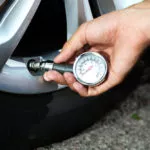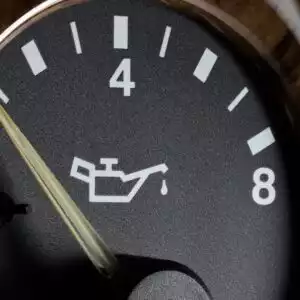Your vehicle’s gauges allow you to view critical vehicle information like speed, engine RPM, and oil temperature, among other information. All vehicles typically come with speedometers and tachometers. However, you might want larger gauges that are more legible. Alternatively, you might need to see other information like oil or water pressure if you’re going to the track.
Here are some aftermarket auto gauges you should consider installing in your vehicle and why installing them is a good idea:
Tachometer

Most vehicles already have a tachometer. However, some tachometers can be quite small, and the steering wheel can obscure them. An aftermarket RPM gauge positioned on top of the vehicle’s dashboard is a great way to keep engine RPM within the driver’s line of sight.
Engine RPM isn’t that important in automatic transmission vehicles, but it can be quite useful for manual transmission vehicle drivers. The tachometer gives drivers a visual cue on when to shift up or down.
Oil Pressure Gauge
Oil pressure is a measure of the force exerted by the oil pump to move the oil through the engine and other components like filters, pipes, and joints. Oil pressure is a good indicator of whether your engine is properly operating.
Oil pressure is typically high when the engine is started, but then the oil pressure drops as the oil heats up and flows easier. High or low oil pressure when the engine is at proper operating temperature could be a concern because it could be a sign that your engine oil is either old or there are blockages in your engine. Meanwhile, low oil pressure could signify worn-out components or an oil leak.
Aftermarket oil pressure gauges are great if you take your car to the track where the demanding conditions can stress the engine and oil system. An oil pressure gauge can warn you if your engine is starting to have issues.
Water Temperature Gauge
The water temperature gauge measures the water or coolant temperature in your vehicle’s cooling system. Most modern vehicles have a water temperature gauge on their dashboards. This gauge is important because if the temperature is too high, your engine might be overheating.
However, most vehicles don’t indicate the precise temperature. Instead, the gauge only shows whether the coolant is cold or too hot. Getting an aftermarket water temperature gauge is great if you want to see your exact coolant temperature.
Ecometer
An ecometer connects to your vehicle’s powertrain control module (PCM) so that it has access to information like throttle inputs and fuel consumption. An ecometer uses this information to show you whether you’re driving efficiently or not. It can also show your vehicle’s fuel economy in miles per gallon. Adding this gauge to your dashboard is a great way to gamify your driving experience in a way that helps you save fuel.
Gear Position Gauge

The gear position gauge is a digital display that shows your gear position. Adept drivers are typically mindful of their gear lever’s position. However, there are situations when they might forget their current gear. Having the gear position displayed on your dashboard is a nice quality-of-life upgrade that can make you more mindful of your current gear position.
Forgetting your gear position can happen when you’re slowing down. You might find yourself in the wrong gear when you need to speed back up. If you slow down enough, you might even stall your engine. The gear position can remind you to shift in the appropriate gear when changing speeds.
Boost Pressure Gauge
The boost pressure gauge displays how much air your vehicle’s turbochargers are pumping. Creating boost pressure involves pressing the throttle enough to the point where there are enough exhaust gases to spin the turbocharger. Boost pressure is more than just air pressure, it also indicates when your engine can create the most power.
Your engine can create a lot more power when turbochargers are spooled up and creating boost pressure.
Boost pressure gauges can be quite useful if your sports car has a turbocharger that requires time to spool up. When this is the case, having a boost pressure gauge can be useful since you can grasp when the engine is responsive to throttle inputs.
Many gauges simply plug into your vehicle’s powertrain control module (PCM) to display accurate information. However, other gauges like the boost pressure might require adding a vacuum tube that connects to the vehicle’s intake manifold.
Aftermarket car gauges need to operate properly and display accurate information. Whatever gauge you go for, don’t be afraid to consult online resources regarding proper installation. Alternatively, you could head to your trusted mechanic.
How to Get a Quality Replacement Aftermarket Gauge
Having an aftermarket gauge in your vehicle is convenient. If one of the gauges you’d previously installed needs to be replaced, you’ll likely miss the added information it gave you. Thankfully, you can easily get a new gauge CarParts.com.
If you buy your aftermarket gauge from CarParts.com, we have good news for you. Our lifetime replacement guarantee is in place for all our buyers. When the gauge you buy from us has come to the end of its lengthy lifetime, we’re happy to replace it. You can simply buy a new replacement part from us, ship back the original part, and we’ll give you a refund after a quick inspection. Couple this with our 60-day return policy and our price match guarantee and you have yourself a bargain.
Upgrade your vehicle’s dashboard now. Order a new gauge kit from CarParts.com today.
Any information provided on this Website is for informational purposes only and is not intended to replace consultation with a professional mechanic. The accuracy and timeliness of the information may change from the time of publication.



















